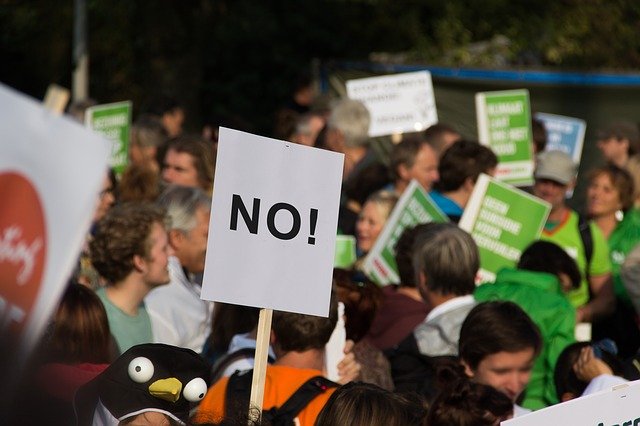It’s become a familiar refrain in the months and weeks leading up to Nov. 3: “This is the most important election of our lifetimes.”
It’s not the first time such a claim has been made, but Americans on both ends of the political spectrum seem especially keen to embrace it amid this year’s contentious presidential race.
Most voters already know who will get their vote when they head to polls in a couple of weeks; many have already cast their votes via mail-in ballot. But what might be even clearer to voters when it comes to this year’s presidential race is the person they don’t want as their commander-in-chief.
The tendency to support a political party or candidate based primarily on dislike for the “other side” is known as negative partisanship, and it’s been picking up steam in American politics, says a University of Arizona political scientist.
“Negative partisanship is the idea that people choose a party not necessarily based on the party’s platform or even the candidate. They do so out of animosity or dislike or disdain toward the opposing party,” said Chris Weber, an associate professor in the School of Government and Public Policy in the College of Social and Behavioral Sciences.
It’s why your social media feeds may seem more filled with impassioned pleas to vote against a particular candidate than cases made in favor of the alternative.
The concept of negative partisanship isn’t new, but it’s intensified as American politics have grown more polarized, says Weber, who researches voter behavior and psychology.
“Since the early ’90s or so, political parties started to grow really polarized, meaning the Republican Party grew more conservative and the Democratic Party grew more liberal,” Weber said.
While research has shown that Republican politicians’ shift to the right has been far more pronounced than Democrats’ shift to the left, it’s fair to say that both parties have moved farther away from one another, ideologically, Weber said. And although this hasn’t generally changed how voters feel about their own political party of choice, it’s certainly stoked negative feelings toward the opposition.
“If we use what’s called a feeling thermometer, which is commonly used in the political science literature, and you ask voters on a scale of zero to 100 how warm they feel toward a political party, those who are Republican are about as warm toward Republicans now as Republicans were 30 to 40 years ago, and the same holds true for Democrats, on average,” Weber said. “What’s changed is the striking dip in feelings toward the opposing party, so Democrats are much more cold toward Republicans and Republicans are much more cold toward Democrats.”
Is that “cold” sentiment enough to get people to the polls, even in cases when they might not feel an equal degree of enthusiasm for their own party’s candidate? Yes, Weber says.
“One consequence of anger, and even negative campaigning in certain circumstances, is that it actually does increase voter turnout,” Weber said. “I’m not going to claim that that’s what we should desire or hope for, but it is a consequence. So, this idea that you can really stoke fear or anxiety to turn up the base has actually been empirically shown to be true.”
High voter turnout aside, the animosity that accompanies negative partisanship is far from a positive thing, Weber says.
“Viewing half of the country or a large section of the country as antithetical to American democracy is actually really harmful,” he said. “These are neighbors in many cases. So, I would certainly not call it a good or desirable thing. It’s a deleterious characteristic of modern democracy, and it’s an outgrowth of political polarization that has potentially very serious consequences.”
The changing media landscape over the last couple of decades has also contributed to negative partisanship, Weber said, as people have been given more power to pick and choose news sources that align with their viewpoints and might not offer balanced or even credible information.
“People can now put themselves in these information environments where their beliefs aren’t really challenged, and we as Americans are not necessarily exposing ourselves to a common set of information or common media platform anymore, which certainly doesn’t help,” he said.
Weber says that as political parties have become less ideologically diverse internally – with fewer members of both major parties leaning more toward the center – there starts to be a “falling out of the middle” that has the potential to erode civil behavior the ability for people to negotiate and find common ground.
Not all hope is lost, however. There are things that can be done to combat negative partisanship, Weber says.
“The more people pay attention to and try to appreciate points of view they don’t necessarily agree with (and) the extent to which politicians stop vilifying out-party candidates and actually speak to the issues at hand – these are solutions,” he said.
Weber also notes that while negative partisanship has intensified in the bases of the Democratic and Republican parties, U.S. voters who identify as independent outnumber those who say they are Democrats and those who say they are Republicans.
“That leaves a large segment of the population and their vote up for grabs,” Weber said. “So, successful candidates will be not only those who appeal to their ideological base but also cater to the beliefs of the middle. There’s so much perceived extremism now; I’m hopeful at some point the parties will start moving back to the middle again.”




